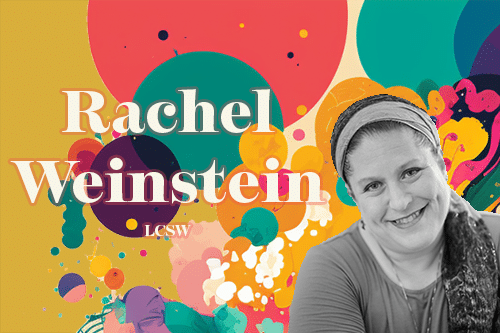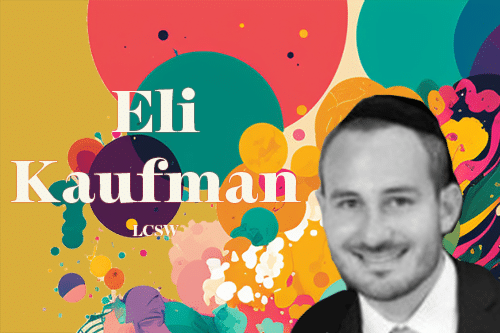Rachel Weinstein is a licensed clinical social worker who specializes in therapeutic support for patients and families facing terminal illness, grief, and loss. She also works with members of the LGBTQ+ community, providing support to individuals and their families. She hails from Brooklyn and Chicago, and supports clients in Israel and Stateside. I had the opportunity to pick her brain in an article titled “When a Therapist Cries” in which she shared a well-balanced and thought-out opinion. Meet Rachel.
What made you want to work in mental health?
I have always been intrigued by what makes people tick; how they think and why.
What is your favorite part of working in mental health?
The people! We are all so much alike and yet, deliciously different. There is never a shortage of things we can learn from one another.
Can you share a memorable experience or success story from your work with a client?
I am always touched when a client remembers something we discussed in therapy or when a client shares that they practiced a skill we’ve been working on- and that it made a huge difference. Seeing folks progress and really grow is a huge source of satisfaction.
How do you continue to educate yourself and stay up-to-date in the field of therapy?
Lots of reading, attendance to courses, both online and face to face, and learning new skills. I have been a social worker for over 20 years and learning EMDR just recently has opened up new ways of understanding my work and the people with whom I am fortunate to do so.
How do you measure progress in therapy, and how do you involve clients in setting and working towards therapeutic goals?
Progress is measured in terms of functionality, comfort, changed behaviors, improved mood, and the ability, for many people, to advocate for themselves. Witnessing a client become the person they want to be, the person they hoped you’d help them become, THAT’S progress!
Do you ever cry along with a patient? If so, would you be willing to share the circumstances?
A client recently lost a child to suicide and I couldn’t help but tear up with them when they told me what’d happened. As a social worker, I’m not there only as a guide and resource, but a human being who is comfortable modeling appropriate human behavior. I don’t think my tears diminished our work together. If anything, I think it let my client know that their anguish was not an academic exercise, but a very real, very sad, very painful experience that they could share with another very real person.




